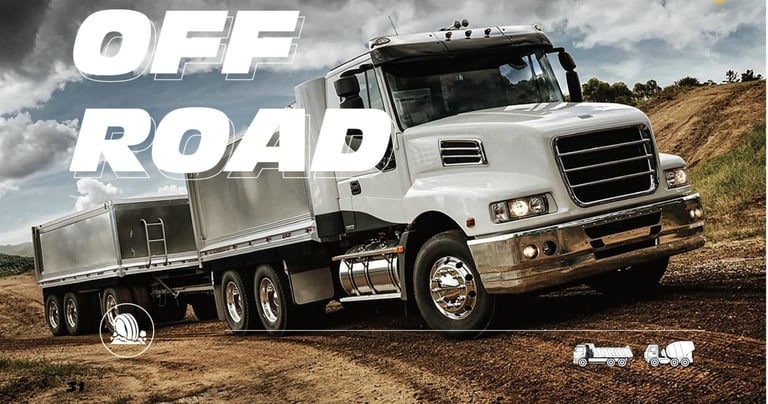Why do deep-tread tires tend to develop problems?
Deep tread tyre is easy to Cut, Puncture, tear, blowout and abnormal wear etc. but still deep tread tyre can not be replaced in some working conditions like mining and construction. Based on Seyoun's technology and design capability, as well as usage rules, the lifespan are hopefully expanded.


Deep-tread tires for industrial and mining applications (commonly known as construction machinery tires or off-road tires) are prone to a series of issues due to their specialized working environments (heavy loads, harsh road conditions, sharp materials, etc.).
SEYOUN Tires has compiled and analyzed market feedback on concentrated problems, and our team of professional engineers has made a series of adjustments to the compound and structure of SEYOUN industrial and mining tires. When combined with proper customer usage and maintenance practices, these enhancements are expected to significantly contribute to safety assurance, production efficiency improvement, and operational cost reduction.
Welcome to check SEYOUN off road tyre lines, especially the patterns SYT903, SYT928, SYT908, SYT996 and SYT998, they're specially designed for construction or mining using, you can check the following link or Whatsapp our online team.
https://sp-mech.com/seyoun-drive-tyre
Below are common issues with deep-tread tires, their root cause analysis, and corresponding solutions:
Industrial truck tires (commonly called “giant tires” or “construction machinery tires”) face far more severe challenges than standard tires due to their extremely harsh working environments (e.g., mines, large construction sites). Issues primarily fall into two categories: “mechanical damage” and “abnormal wear.”
Below is a detailed analysis of common problems and their solutions:
I. Common Problems and Causes
1. Cuts, Punctures, and Tears
Cause: This is the most frequent issue for mining truck tires. Work sites are littered with sharp rocks, ore fragments, and metal debris. Under heavy loads, tires are cut or punctured by these foreign objects, damaging the tread rubber and even the carcass cords.
Manifestation: Deep gouges or cracks appear on the tread surface. Severe cases lead to carcass ply separation, ultimately resulting in tire failure or blowouts.
2. Blowouts
Causes:
Heat Separation: Continuous operation under heavy loads and relatively high speeds generates significant internal friction heat. If heat cannot dissipate promptly, the tire's internal temperature may exceed 120°C, causing the adhesive bonding rubber between the rubber and cords to fail. This leads to separation of the cord layers, internal gas expansion, and ultimately an internal explosion of the tire.
Impact Blowout: When a vehicle traverses potholes or crushes large, hard rocks at high speed, the tire undergoes severe impact. The rim and rock compress the sidewall or tread, causing instantaneous cord breakage and a blowout.
Progressive Cuts: Minor cuts, if left untreated, can enlarge under heavy loads and flexing, eventually damaging the tire carcass and causing a blowout.
3. Abnormal Wear (Uneven Wear)
Causes:
Shoulder Wear: Chronic underinflation causes excessive flexing and heat buildup in the tire carcass. Simultaneously, the tread contracts inward, creating excessive contact pressure on the shoulders and resulting in abnormal wear on both sides.
Center crown wear: Chronic overinflation causes the center tread to bulge, concentrating load and friction on the middle section, resulting in accelerated wear.
Sawtooth wear: Typically associated with improper vehicle alignment (e.g., toe-out), incorrect brake system adjustment, or aggressive driving habits (sudden braking, sharp turns).
Uniform wear on one side: Damaged or deformed chassis components (e.g., suspension, bearings) cause wheel misalignment.
4. Tread rubber peeling or chunking
Causes: Primarily due to thermal aging or mechanical damage. Rubber softens and loses strength at high temperatures, making it susceptible to tearing or scraping by hard materials. It may also result from rubber compounds unable to withstand extreme operating conditions.
5. Rim Damage
Causes: Severe impacts from rough road conditions may deform or fracture the rim, or damage the sealing area. This can lead to air leaks, causing the tire to operate at low pressure and sustain damage.
II. Solutions and Management Measures
Addressing these issues requires a systematic approach known as Total Tire Management, rather than simply replacing tires when they fail.
1. Daily Inspection and Maintenance (The Most Critical and Cost-Effective Step)
Tire Pressure Management:
Strictly enforce standards: Tire pressure must be checked and adjusted daily before work begins, when tires are cool, according to the tire manufacturer's recommendations and specific load conditions. This is the most effective measure to prevent thermal separation and abnormal wear.
Use Professional Tools: Equip each vehicle with a high-quality tire pressure gauge, calibrated regularly.
Invest in Central Tire Inflation (CTI) Systems: For large mining trucks, consider installing CTI systems. Drivers can monitor and adjust all tire pressures in real-time from the cab to adapt to varying road conditions (e.g., gravel vs. hard rock surfaces).
Tire Inspection:
Daily Visual Inspection: At each shift change, inspect treads for cuts, embedded stones, and abnormal wear patterns.
Remove Embedded Stones: Regularly clear stones lodged in tread grooves to prevent further tire damage.
Damage Documentation: Record and track all damage, assess its severity, and determine whether to repair, replace, or continue monitoring.
2. Driving Operation Standards
Driver Training: Proper driving habits significantly extend tire life.
Smooth Driving: Avoid sudden acceleration, braking, and sharp turns.
Route Selection: Train drivers to identify and avoid sharp obstacles and deep pits on roads.
Speed Control: Maintain moderate speeds on rough terrain to minimize impact damage.
Overload Prevention: Strictly adhere to vehicle rated load capacity.
3. Site Road Maintenance
Maintain Surface Flatness: Regularly use graders to clear and level roads, minimizing potholes and protruding rocks.
Clean Road Surfaces: Promptly remove sharp materials spilled from cargo beds.
Design Reasonable Ramps: Loading/unloading ramps should be gently sloped to reduce tire scraping and impact.
4. Tire Selection and Retreading
Select Appropriate Tires: Choose optimal tires based on specific operating conditions (road surface type, load, speed, climate). Examples:
Rock-Type (E/L Series): Deeper tread, thicker tread compound, and cut-resistant formula for extreme gravel surfaces.
Mixed-Type: Suitable for diverse road conditions.
Energy-Efficient: Consider low rolling resistance tires for fuel savings on good road surfaces.
Invest in Branded Tires: While high-quality tires have a higher initial cost, their superior cut resistance, heat stripping resistance, and longer overall lifespan may result in lower total cost of ownership (TCO).
Tire Retreading: For large tires with intact carcasses and only tread wear, multiple retreads are possible, saving approximately 50% of new tire costs—a key method for cost reduction and efficiency improvement.
5. Professional Repair and Replacement
Timely Professional Repair: Minor cuts or punctures should be professionally repaired using hot patches or specialized compounds like TECH to restore airtightness and partial strength. Never overlook minor damage.
Prompt Replacement: Immediately replace tires when damage reaches the plies, bulges appear, or tread wears down to the wear indicator. Failure to do so significantly increases the risk of blowouts, leading to greater safety hazards and production losses.
Summary
Industrial truck tire management is a systematic endeavor encompassing personnel, machinery, materials, methods, and environment:
Personnel: Train drivers.
Machinery: Select and maintain vehicles and tires appropriately.
Materials: Choose high-quality tires and repair materials.
Rules: Establish rigorous tire pressure checks, tire inspections, operating procedures, and road maintenance protocols.
Environment: Improve road conditions at worksites.
Among these, daily inspections and maintaining standard tire pressure offer the most cost-effective and efficient method to extend tire life and ensure safety. Comprehensive management can significantly reduce tire costs (the second-largest expense in industrial and mining operations) while enhancing equipment uptime and operational safety.
